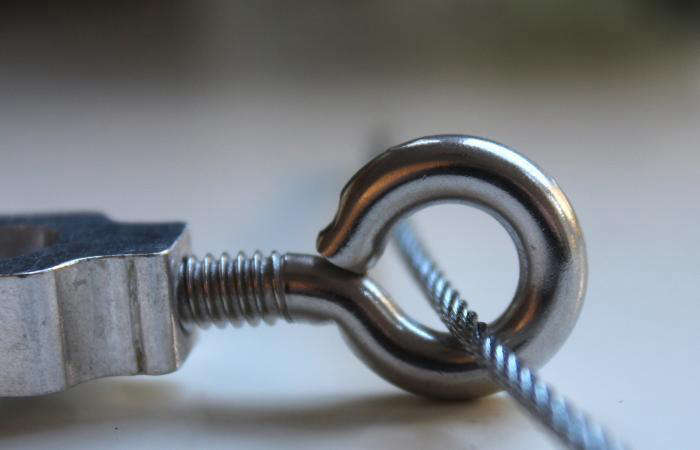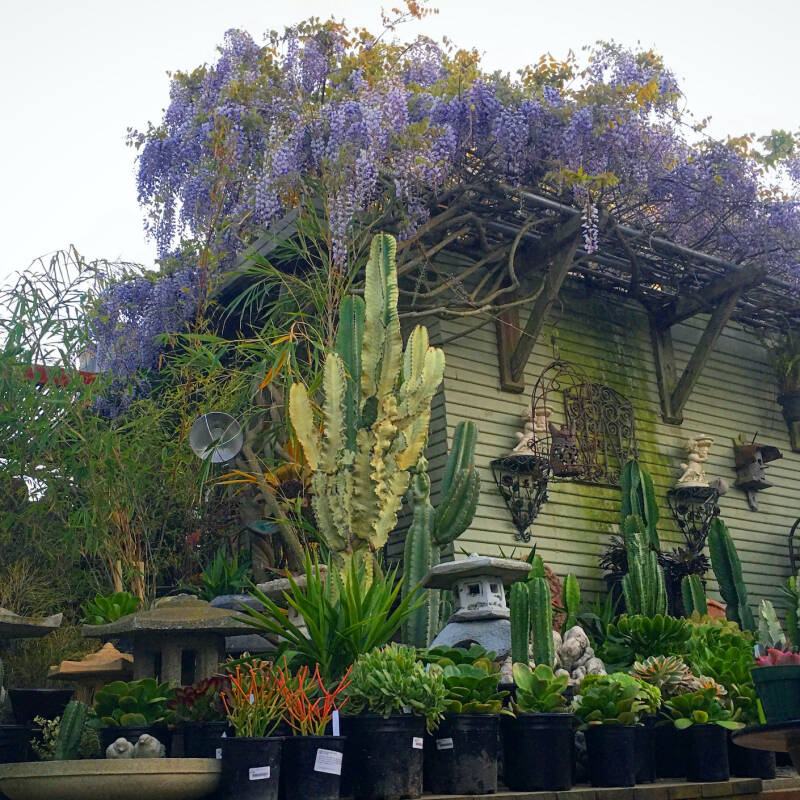I always walk past my wisteria briskly–show no fear–and sometimes when I talk to it, I say, “You are a plant. I am the human. I am in charge.” But neither the wisteria nor I really believed that was true until I figured out a foolproof system to tame it.
The challenge with wisteria isn’t how to get it to grow–it likes poor soil and full sun and the side of your house–but how to train it to grow nicely against the house. For that, wisteria needs the support of a strong trellis system.

Wisteria tendrils will twist clockwise or counterclockwise around any support system it can find. At my house, I used heavy stainless steel components to create a grid system where the wisteria can be happy.

Above: Photograph by Michelle Slatalla.
The components of the grid include inexpensive hardware purchases (you can also buy them online from Sears). I used 3.75-inch-long stainless steel Lag Eye Bolts (Top) for $1.99 apiece; Stainless Steel Cable for $62 for a 125-foot roll, and Stainless Steel Turnbuckles for $24.05 for a package of ten.

Above: Anchor the bolts into the wall at 12- to 18-inch intervals. I created a diamond-pattern grid. Then thread the cable through the bolts. Photograph by Michelle Slatalla.

Above: Wisteria needs a strong trellis support.
After your trellis is in place, tie individual branches to the cable to train it to grow alongside the grid. To keep wisteria under control, prune vigorously. In autumn and winter, prune side shoots to a length of 3 inches along main branches.
Wisteria is our Plant of the Week. For more, see A Dangerous Beauty (Are You Tempted?).
Finally, get more ideas on how to successfully plant, grow, and care for wisteria with our Wisteria: A Field Guide.
Finally, get more ideas on how to plant, grow, and care for various vines and climbers with our Vines & Climbers: A Field Guide.











Have a Question or Comment About This Post?
Join the conversation